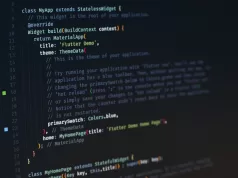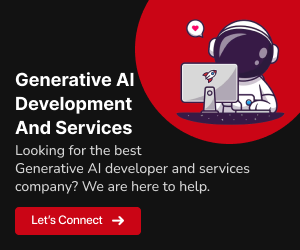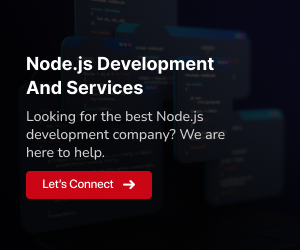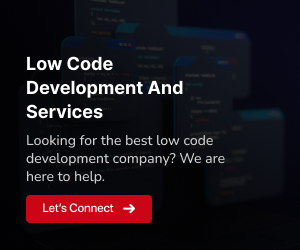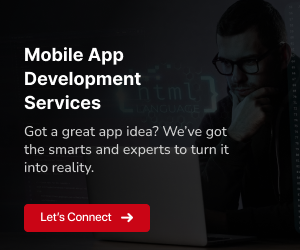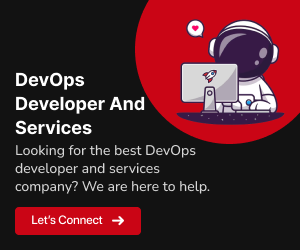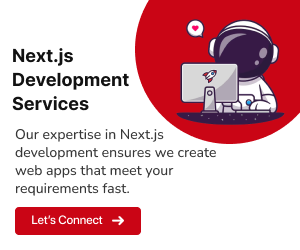Discover the latest trends and effective strategies for successful Flutter Development in the USA.
Unlocking Flutter Mastery: Exploring Strategies and Trends for Success in the USA
In the dynamic realm of mobile app development, maintaining a competitive edge is essential. Flutter, a robust cross-platform framework, has emerged as a potent tool for crafting outstanding applications. As technology evolves and user demands soar, the landscape of app development in the USA remains in flux. Navigating these shifts requires developers to embrace the latest tips and trends that can elevate their Flutter projects. This comprehensive guide is your gateway to a wealth of insights, techniques, and emerging trends that empower you to create impactful Flutter apps. From enhancing performance to harnessing cutting-edge UI frameworks, this guide equips you with the knowledge to excel on your Flutter app development journey in the thriving market of the United States.
Forging Excellence: Expert Guidance and Emerging Trends in Flutter App Development
Invaluable Tips for Flourishing Flutter Developers
Unlock the potential of Flutter app development with expert tips and strategies. Enhance your skills, streamline your workflow, and create captivating apps that stand out. Whether you’re a seasoned pro or a newcomer, this guide is your pathway to success in the dynamic realm of Flutter development.
Responsive Design and Adaptive Layouts:
Crafting interfaces that seamlessly adapt to diverse screen sizes and orientations is pivotal. Employ Flutter’s layout widgets and responsive design principles to guarantee your app’s flawless performance across various devices.Performance Optimization:
While Flutter’s “hot reload” feature expedites iterations, optimizing performance necessitates minimizing widget rebuilds. Leverage Flutter’s profiling tools to identify bottlenecks and streamline resource usage for an unparalleled user experience.Elevate UI/UX Focus:
In the competitive realm of apps, user experience takes precedence. Elevate user engagement and retention by prioritizing intuitive navigation, captivating animations, and visually appealing UI components.Strategic State Management:
Choose a state management approach congruent with your app’s complexity. Delve into options like Provider, BLoC, or MobX to skillfully manage app state, boosting responsiveness and manageability.Universal Accessibility and Inclusivity:
Paving the way for an all-encompassing user base requires making your app accessible to everyone, including those with disabilities. Implement features like screen reader support, high contrast modes, and customizable font sizes.Seamless Backend Integration:
Expertly master API integration to seamlessly link your app with backend services. Implement RESTful APIs, GraphQL, or other communication methods for effortless data exchange and real-time updates.Effortless Offline Functionality:
Ensure your app functions seamlessly even sans internet connectivity. Leverage local storage, caching mechanisms, and background syncing for uninterrupted experiences in offline scenarios.Data Security and Privacy:
Safeguard user data through robust security measures. Utilize data encryption, secure authentication mechanisms, and adhere to data privacy regulations to cultivate user trust.Global Reach through Localization:
Broaden your app’s horizons by offering content in diverse languages. Utilize Flutter’s internationalization and localization capabilities to provide users with a localized experience tailored to their language and region.Perpetual Learning Journey:
The Flutter realm is in constant flux. Engage with the Flutter community, attend webinars, and workshops, and explore online tutorials to remain attuned to the latest advancements and optimal practices.
Read more: The Impact of AI and Machine Learning on Flutter App Development in the USA
Exploring Tomorrow’s Innovations
- Embark on a journey of discovery as we delve into the forefront of innovation. Uncover the latest advancements, trends, and groundbreaking ideas that are shaping the future across diverse industries and technologies. “Exploring Tomorrow’s Innovations” is your gateway to staying ahead of the curve and gaining insights into the transformative changes that await us.
Cloud Integration:
As cloud services soar, contemplate integrating services like Firebase for authentication, real-time databases, and cloud storage to amplify your app’s functionality.Augmented Reality (AR) and Virtual Reality (VR):
Infuse innovation through emerging technologies like AR and VR. Elevate user engagement by incorporating interactive elements and 3D interfaces within your Flutter apps.Fusion of Machine Learning and AI:
Infuse intelligence into your app via machine learning and AI plugins. Amplify user engagement through features like image recognition, natural language processing, and recommendation systems.Heightened Accessibility Focus:
Accessibility garners increasing attention. Accommodate individuals with disabilities by integrating accessibility features like VoiceOver and TalkBack compatibility.Optimizing App Store Presence (ASO):
Elevate your app’s visibility on app stores through meticulous optimization of keywords, screenshots, and app descriptions, and fostering user reviews.User-Centric Analytics:
Embrace analytics tools to glean insights into user behavior, preferences, and interactions. Leverage data-driven insights to enhance app features, invigorate user engagement, and refine user journeys.Thorough UI Testing and Quality Assurance:
Establish a robust testing regimen to unearth and resolve bugs, ensuring code stability and delivering an impeccable user experience.Nurturing Collaboration and Code Review Culture:
Cultivate a collaborative development ecosystem within your team. Regular code reviews bolster code quality, ensure uniformity, and foster knowledge exchange among team members.
Crafting a Bright Future in Flutter: Masterful Tips and Trends
Navigate the vibrant world of Flutter app development with confidence by embracing a wealth of insights, efficient state management, and emerging trends. As you uncover optimized UI/UX strategies, integration of cutting-edge technologies, and the power of continuous learning, you’re poised to shape the future of mobile experiences in the USA. Let this guide be your compass, guiding you toward crafting apps that captivate users, foster engagement, and leave an indelible mark on the ever-evolving landscape of technology. Your expertise and Flutter’s potential converge to paint a compelling picture of innovation and exceptional mobile experiences.Unveiling Clarity: Navigating FAQs in Flutter App Development
Q1: What is Flutter, and why is it gaining popularity among developers?
A1: Flutter is an open-source UI software development kit created by Google, enabling the creation of natively compiled applications for mobile, web, and desktop from a single codebase. Its popularity is due to its fast development cycles, expressive UI components, and cross-platform capabilities, streamlining app development and saving time and resources.
Q2: How do I choose the right state management solution for my Flutter app?
A2: Choosing the right state management solution depends on your app’s complexity and your familiarity with the tools. Popular options include Provider, BLoC, MobX, and Riverpod. Evaluate their features, ease of use, and compatibility with your project’s requirements to make an informed decision.
Q3: What are the benefits of following the mentioned trends in Flutter app development?
A3: Following trends in Flutter app development keeps your apps aligned with user expectations and industry standards. Trends like cloud integration, AR/VR, and AI enhance user experiences while focusing on accessibility, ASO, and user-centric analytics improving discoverability, engagement, and data-driven decision-making.
Q4: How can I stay updated with Flutter’s evolving landscape and best practices?
A4: Engage with the Flutter community through online forums, social media groups, and official documentation. Attend webinars, workshops, and conferences to learn from experts, and explore online tutorials and courses to stay current with best practices and emerging features.
Q5: Is Flutter suitable for both small-scale and large-scale app development projects?
A5: Yes, Flutter is versatile and suitable for both small-scale and large-scale app projects. Its reactive UI framework and wide range of pre-built widgets make it efficient for rapid prototyping, while its performance optimizations and customizable components cater to the needs of more complex applications.
Q6: Are there any drawbacks or challenges associated with Flutter app development?
A6: While Flutter offers numerous advantages, challenges include the learning curve for newcomers, limited third-party libraries compared to some other frameworks, and the need for effective state management in larger projects. However, these challenges can be mitigated with continuous learning, community support, and choosing the right tools.
Q7: What role do UI/UX considerations play in Flutter app development?
A7: UI/UX considerations are pivotal in Flutter app development. A well-designed and intuitive user interface enhances user satisfaction and engagement. By prioritizing responsive design, delightful animations, and user-friendly interactions, developers can create apps that stand out in the competitive market.
Q8: How can I ensure my Flutter app’s success in the USA’s competitive app market?
A8: To ensure success, focus on optimizing performance, adhering to user-centric design principles, and keeping up with emerging trends. Utilize state-of-the-art UI frameworks, engage in user-centric analytics, and prioritize accessibility to create a well-rounded app that resonates with users in the USA.
Q9: What resources are available for learning Flutter app development in the USA?
A9: The Flutter community offers a wealth of resources for learning, including official documentation, online courses, YouTube tutorials, and coding boot camps. Engage with local meetups, attend conferences, and participate in online forums to connect with other developers and enhance your skills.
Q10: How can I address the challenges of staying updated with Flutter’s rapid development cycle?
A10: To stay updated, subscribe to official Flutter newsletters, follow Flutter-related blogs, and regularly check the official documentation for new features and updates. Engage in the Flutter community to gain insights from experienced developers and stay informed about the latest trends and best practices.







